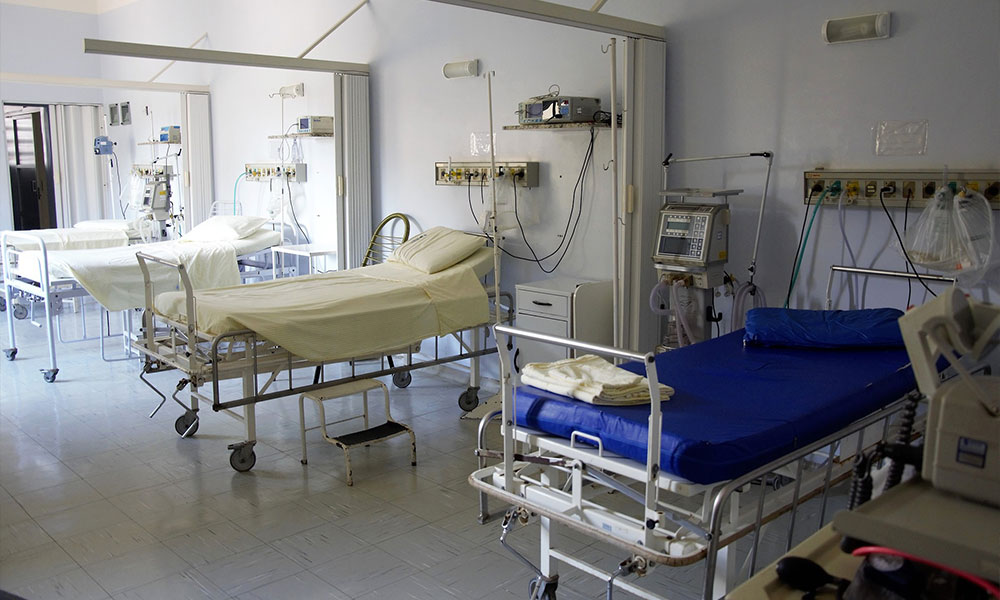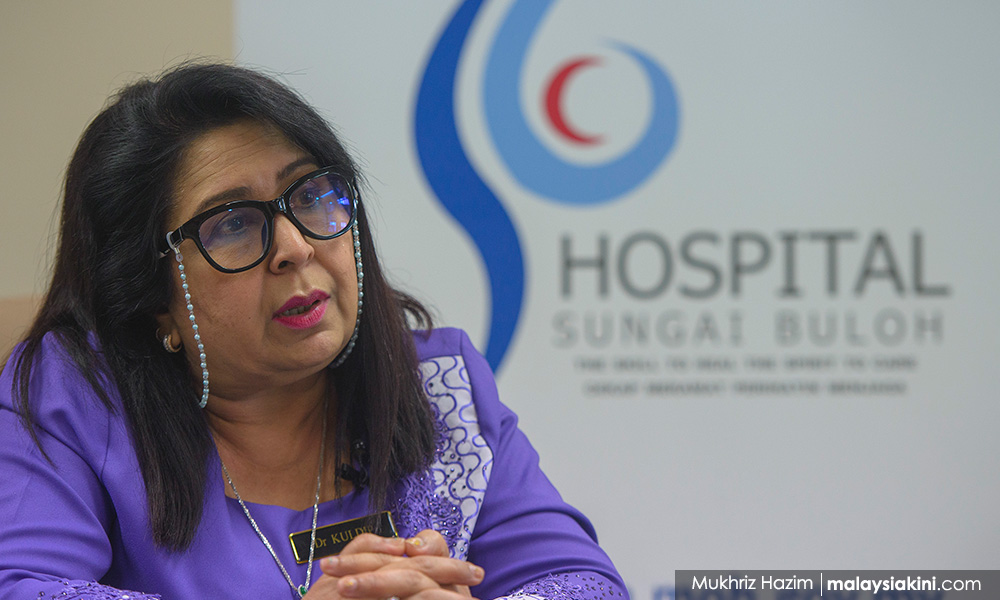Since the first Covid-19 case in late January 2020, our country has experienced different waves of cases – there were times when the number of cases and fatalities suddenly explode after a relative lull.
After a moderate period from June to August last year, the third wave was unleashed, proving fast-spreading, widespread and deadly.
Sungai Buloh Hospital (HSB) director Dr Kuldip Kaur revealed how even the main dedicated Covid-19 treatment facility in the country was caught by surprise when the third wave suddenly hit the country in September 2020.
"The third wave has been the most challenging so far. Within no time, all of our beds were full.
"Not only our hospital beds but also the extra wards which we had opened at the National Leprosy Control Centre and the Sungai Buloh Health Ministry Training Centre were full in no time," she told Malaysiakini in a recent interview.
This exclusive interview with the Sungai Buloh hospital director was conducted in conjunction with the first anniversary of the Covid-19 pandemic hitting Malaysian shores.
The hospital, which has been designated the Health Ministry’s (MOH) main facility for coping with Covid-19 cases, had around 1,800 beds dedicated to Covid-19 cases under its administration.
86 percent of cases were in the third wave
To put into context just how impactful the third wave has been - up until March 3, 2021, Sungai Buloh Hospital has received a total of 48,620 Covid-19 positive patients.
Of this, 41,829 or 86 percent of the cases were recorded during the third wave alone.
READ MORE: Activate! – A frontliner recalls the pandemic’s first cases
The first wave only saw 159 patients treated at the hospital. Most were travellers with a history of visiting countries in which the Covid-19 risk of high. The second wave was largely associated with a religious gathering in late February, which saw 6,632 patients sent to Sungai Buloh.
According to Kuldip, who herself is a public health physician, the sheer volume of cases in the third wave came in a surge, and the facility was also grappling with other big challenges - the third wave saw more cases with comorbidity and severe illnesses.

"The volume of cases was a lot, and it was high since the start of the third wave. But at the beginning, (cases) profiling was a bit young.
"Somewhere around mid-November, the profile changed to more comorbid cases, more ill cases. And we start having more and more ill cases coming in.
"By this time, other hospitals were still hybrid facilities, meaning they were still treating non-Covid patients as well. But we needed more ICU beds," she said.
Managing human resources
This, in turn, posed another challenge to HSB. According to Kuldip, while they have enough equipment to increase the hospital capacity, managing manpower needs was more challenging.
This was especially true in the intensive care unit (ICU) wards, which implement a standard ratio of healthcare workers needed per patient being treated. For example, an intubated patient would need one-on-one care.
"We needed more trained staff to open more beds. Until today we can open up to about 60 ICU beds.
"We aim to open more because we have the capacity in terms of equipment, but we need more trained staff. This means we not only need more staff, but they must be trained ICU nurses and doctors.
"That is challenging and most challenging to start with the third wave."
Malaysia had 130 fatalities before third wave started
According to the MOH's daily statistics, when the third wave started in September last year, the country's cumulative number of positive cases was only 10,219, with 130 deaths as of Sept 20, 2020. However, as of yesterday (March 8), the number had grown to 314,989, with 1,177 total deaths related to the pandemic.
During the third wave, the situation was so bad that Health director-general Dr Noor Hisham Abdullah had at one time in January declared that the healthcare system was at its "breaking point".
"Everybody all over is trying their best, and this is a challenging time compared to the second wave. We still see a very high number of cases, still in the four figures," said Kuldip.
Some staff had to be retrained
Comparing the two previous Covid-19 outbreak waves, the hospital administrator said situations were different then in terms of the time and external assistance HSB had.
During the first wave, which began when a family of four from Wuhan, China, was first diagnosed with Covid-19 on Jan 25 last year, the number of cases came in slowly.
The first wave involved mainly travellers who showed symptoms of the coronavirus. HSB initially only opened two isolation wards with around 56 beds (28 each) before starting decanting two others on the same floor to prepare as more cases started coming in.

According to Kuldip, it took about a month after the first cases were admitted before all four isolation wards, slightly over 100 beds, were filled.
"We consider that as the first wave because as for that time, other cases started coming in, either patient under suspect, under investigation, and in no time, we cleared up two wards for these cases.
"So after that, we started preparing the hospital for more patients. We have heads of department meetings. From there, we plan our next course of actions, discussing what we would do if more wards are required. So that was the planning on decanting.
"Initially, we thought that maybe we wouldn't need to use more than one floor. But then it went on to the next ward, the third, fourth and so on. That's it; the whole floor was cleared," she said.
By March, HSB started seeing the number of cases rising up even faster. But at that juncture, they had already prepared for what was to come - the second wave.
The second wave was largely related to a religious gathering held in Sri Petaling, Kuala Lumpur, between Feb 27 and March 3 last year.
The gathering contributed to one of the country's largest infection clusters, namely the Sri Petaling cluster, which recorded 3,375 positive cases and 34 deaths by the time it was declared over on July 8, 2020.
According to Kuldip, between Jan and March 2020, the hospital had to cut down its elective and semi-emergency cases to prepare more space for Covid-19 cases.
Existing patients who were not admitted because of the pandemic were transferred to nearby hospitals in the Klang Valley.
As other types of treatments have been decanted, the hospital then pulled all of its human resources from non-infectious disease departments to focus on the pandemic.
"There was no choice. They have to be retrained (to work in infectious disease wards). We have to give them awareness, train them on PPE (personal protective equipment) protocols, and not only that, but we also have to prepare them mentally.
"And I must say that during the second wave because we were one of the main responding hospitals, we received a lot of help because a lot of manpower was deployed. There was a lot of assistance from other hospitals all around the country," said Kuldip.
The doctor also expressed her appreciation for the generosity of wellwishers, including NGOs and individuals who had helped the hospital when they were fighting the pandemic.
This was especially during the early stages of the outbreak when medical facilities around the country were running short of resources, especially PPEs.
"Resources were definitely limited. But we were lucky because we had so many wellwishers. Of course, MOH provided us with PPEs, and on top of that, we also got wellwishers and NGOs who come forward to donate PPEs.
"There were also volunteers who came together to do our in house PPEs," she said.
It’s that sort of positive support that gives our frontliners the extra strength to keep up their courageous battle against a relentless enemy. - Mkini



No comments:
Post a Comment
Note: Only a member of this blog may post a comment.